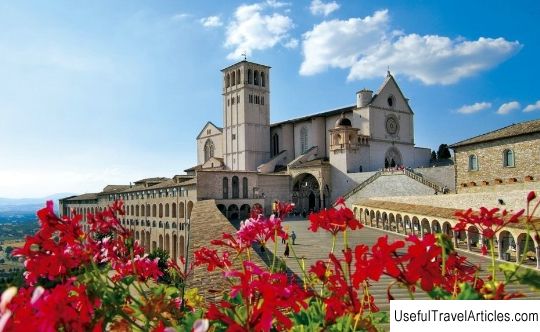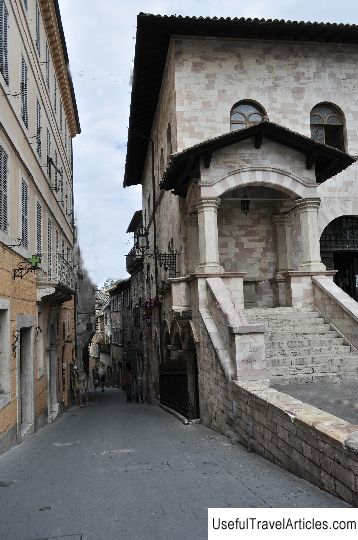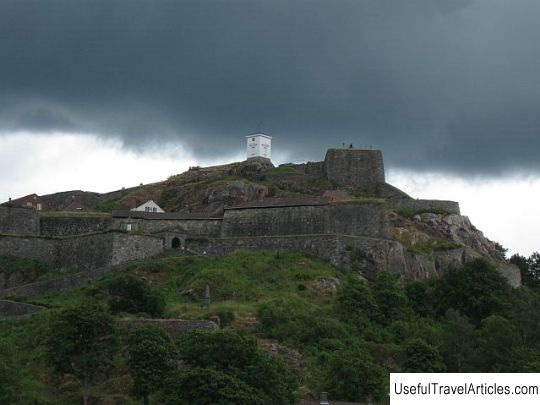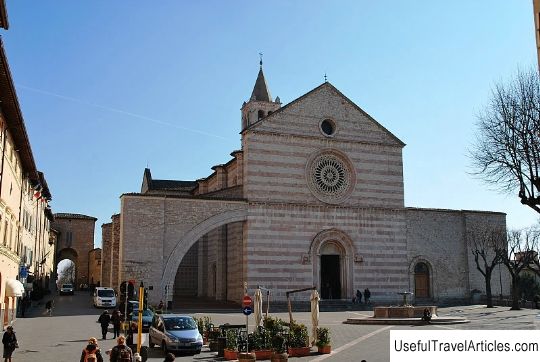Church of San Francesco (Basilica di San Francesco d'Assisi) description and photos - Italy: Assisi
Rating: 8,3/10 (960 votes) 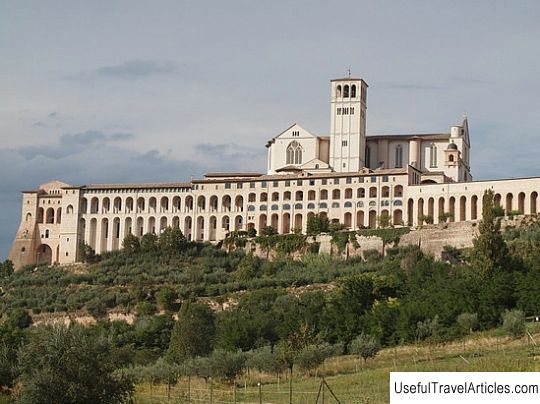
Church of San Francesco (Basilica di San Francesco d'Assisi) description and photos - Italy: Assisi. Detailed information about the attraction. Description, photographs and a map showing the nearest significant objects. The title in English is Basilica di San Francesco d'Assisi. Photo and descriptionThe Church of San Francesco in Assisi is the main church of the Catholic Franciscan order and one of the six large basilicas of the Catholic Church. The main attraction of the church is considered to be a cycle of frescoes made in the 13th century based on scenes from the life of St. Francis. The authorship of this creation is attributed to the great Giotto and his students. Together with the nearby Sacro Convento monastery, the Basilica of San Francesco is included in the UNESCO World Heritage List. The two-story church was built in the 13th century. Its upper tier is traditionally called the Upper Church: it is a visible part of the building, standing on a hill. And the so-called Lower Church is hidden in the thickness of the hill and among the ordinary buildings of the monastery, before the eyes of the public, only the southern Gothic portal, facing the Piazza San Francesco. By the way, there are also two squares - on the Upper Piazza San Francesco, covered with a lawn, is the entrance to the Upper Church. Both tiers are made in the form of single-nave basilicas with a transept, but in the lower there are many more chapels and crypts. From there you can go down to the main crypt of the church, where the remains of St. Francis of Assisi are buried. Next to the southern facade of the building there is a bell tower 60 meters high. As for the interior of the church, its two tiers differ significantly. The lower church, immersed in light twilight, resembles traditional ancient Roman crypts. But the spacious Upper, on the contrary, expresses new aesthetic values that will subsequently spread throughout Italy. Interestingly, despite the popularity of the Gothic style in 13th century architecture, the builders of San Francesco seem to have deliberately abandoned its dominance. In the external appearance of the church, features of the French Gothic and Romanesque styles merged. The construction of the Basilica of San Francesco and the Sacro Convento monastery began in 1228, immediately after the canonization of St. Francis. For this, an unusual place was chosen - the so-called Hell's Hill, on which criminals were once executed. However, when this hill was chosen by Francis of Assisi himself for repose, it began to be called Paradise. The lower church was completed already in 1230 - the body of the founder of the order was immediately placed there. The upper church, on the decoration of which the best masters of their time, including Giotto and Cimabue, worked, was built much longer - until 1253. In 1288, the entire basilica received the status of a papal church. Already in our time, in 1997, during a strong earthquake in Umbria, the church of San Francesco was seriously damaged, and four people died under the rubble. Some of the frescoes were destroyed and it took about 2 million euros and titanic work to restore them. Restorers have collected over 180 sq.m. fragments. wall paintings, however, it is not possible to completely recreate them. Next to the Church of San Francesco stands the Sacro Convento monastery, remarkable for its imposing walls with 53 Romanesque arches. It rises above the valley below, creating the impression of a powerful fortress. The monastery was built of pink and white stone. Already in 1230 the first monks appeared there. Since the building was under construction for a long time, it also mixed features of different architectural styles - Romanesque and Gothic. Today, it houses a large library with a collection of medieval texts and a museum that houses art donated by pilgrims.          We also recommend reading Jewish Museum of Rhodes description and photos - Greece: Rhodes Topic: Church of San Francesco (Basilica di San Francesco d'Assisi) description and photos - Italy: Assisi. |
